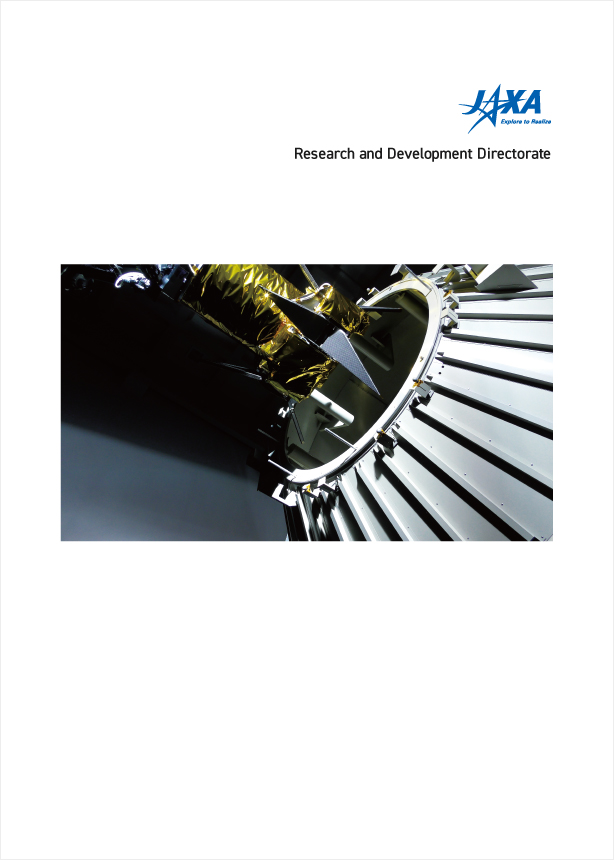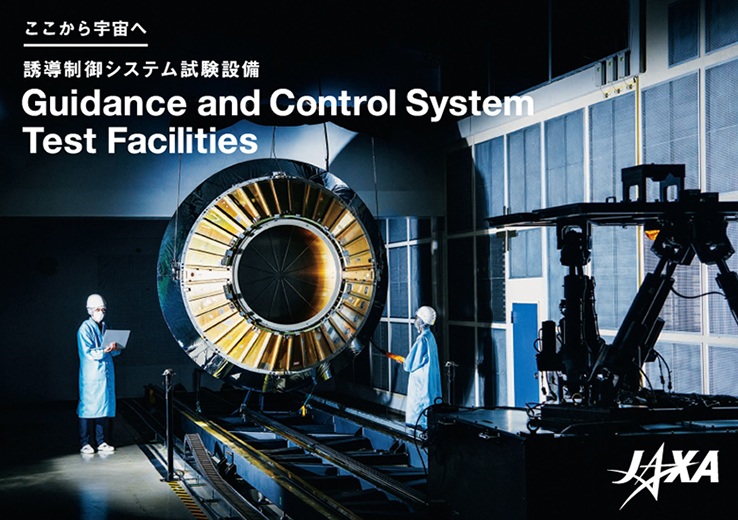The characteristics of lasers as an energy transfer medium
- Lasers can be fit within compact instrumentation. (This allows us to develop a small SSPS.)
- Lasers cannot penetrate clouds or rainfall.
- Lasers are susceptible to atmospheric disturbances.
- Lasers require stringent safety requirements to protect human eyesight. (Lasers are very hazardous to the human eye.)
R&D on laser beam steering technology
The SSPS Research Team has been researching and developing technology to control the direction of laser beams. A laser beam must be pointed with an accuracy of 1 μrad (5.7×10-5 deg) to limit the divergence to several tens of centimeters when transmitted from low earth orbit (LEO) at an altitude of several hundred kilometers. When transmitted from geostationary orbit (GEO) located 36,000 kilometers away, it must be pointed with an accuracy of 0.1 μrad (5.7×10-6 deg) to limit the divergence to several tens of meters. To attain this accuracy, the team selected a beam-steering control method operated by establishing a mutual laser link between the ground and space segments. The ground segment sends a pilot laser beam to the space segment, which sends back a beacon beam based on the angle at which the pilot beam arrives. Next, the high-power main laser beam sends electric power to Earth. The team is now striving to achieve an accuracy of 1 μrad as a near-term goal with a view to ultimately realizing an accuracy of 0.1 μrad.
Lasers are susceptible to the effect of atmospheric disturbances near the ground. An atmospheric disturbance significantly distorts the pilot beam sent up from the ground to spacecraft, causing spacecraft to detect the arrival angle fluctuations of the pilot beam. The fluctuations can be offset by a Fast Steering Mirror (FSM), a device that rapidly corrects the angular deviation of the beam to ensure that the beacon laser and main laser beams can be directed toward the terrestrial receiving system spot on.
Optical communication links between spacecraft and the ground are established using a similar approach, but the optics for the L-SSPS spacecraft differs in two important ways. First, the instrumentation must be designed to handle a far more powerful class of laser than the lasers used for optical communications. Second, it must transmit energy with extreme efficiency to ensure that the ground receiving system receives most of the laser energy transmitted via main laser beams and converts it into electricity.
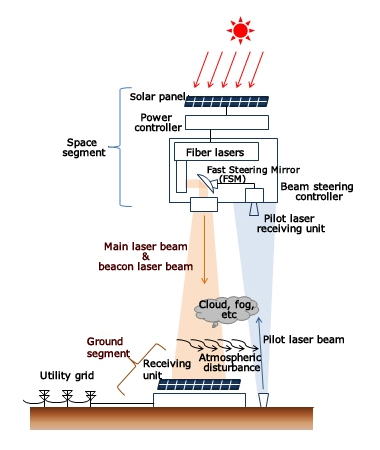
Laser oscillator and terrestrial receiving unit
The laser oscillator currently selected for the L-SSPS is the CW fiber laser, a class whose power has been growing exponentially for years. Fiber lasers are used widely in drilling, welding, and other material-processing industries. Powerful types with outputs of up to 10 kw at a 1070 nm wavelength (near infrared) are now commercially available. After further study on the materials, thermal control, and higher outputs and efficiency, these commercial lasers are expected to be adaptable for application in space.
A terrestrial receiving unit must convert laser to electricity efficiently. The SSPS Research Team has been researching high-efficiency conversion of laser with given wavelengths using photoelectric conversion elements such as InGaAs.
Ground demonstration on laser wireless power transmission
The SSPS Research Team has been working on ground demonstrations of wireless power transmission by laser with a view to achieving high-accuracy beam steering control even under the effect of atmospheric disturbance.
The SSPS Research Team conducted a series of 500-m horizontal laser transmission tests at its test site in 2012 and 2013, demonstrating that the beam could be controlled with an accuracy of 1 μrad when atmospheric disturbances were relatively weak. Yet the fluctuations of arrival angle of laser could not be adequately controlled under intense sunshine, a major source of atmospheric disturbances near the ground.
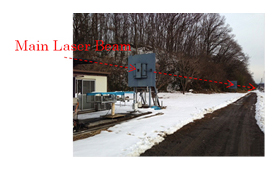
A 500-m horizontal laser transmission test at 3 meters above the ground. To ensure safety,
weather observation instruments and beam shield panels were placed.
In the next round tests, the team will be transmitting a laser from the top of a 200-meter-high tower to the ground along a pathway similar to the space-to-ground pathway of the L-SSPS. The team expects to achieve stable beam steering control even under intense sunshine because of the shorter time spent passing through the near-ground atmospheric disturbances. The main laser output power will be up to 500 W. A demonstration scheduled to start in FY2016 will target an accuracy of 1 μrad.
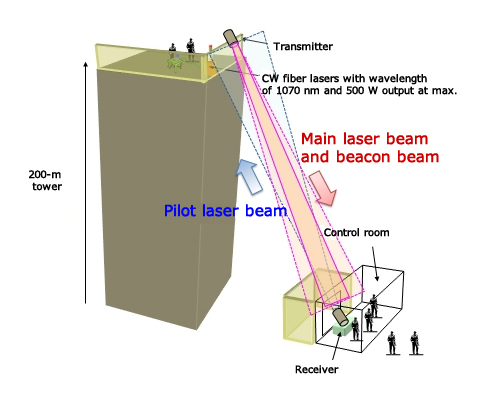
(conceptual drawing)
Technological challenges
Several tasks lie ahead for us in our work to develop the laser wireless power transmission.
- Develop a space-qualified high-power fiber laser
- Increase the efficiency of the electricity-laser conversion
- Increase the efficiency of the laser-electricity conversion
- Improve the response speed of the FSM (improve the response to fluctuations of the arrival-of-angle of the beam)
- Work out an optimal optical design for high-power lasers
- Develop methods to prevent weather-induced losses of efficiency and blockage of energy transmission (weather forecast, multi-sites)






